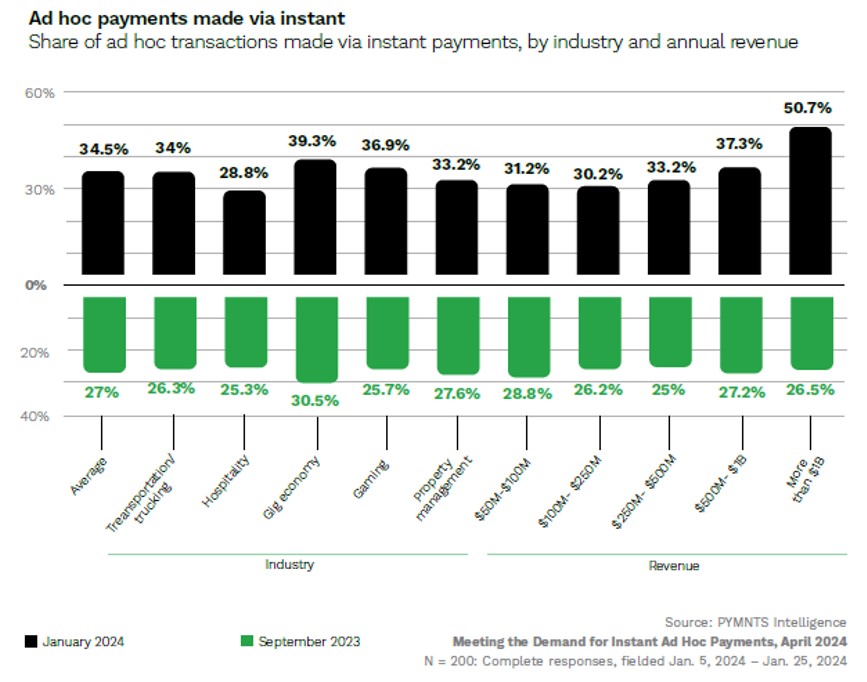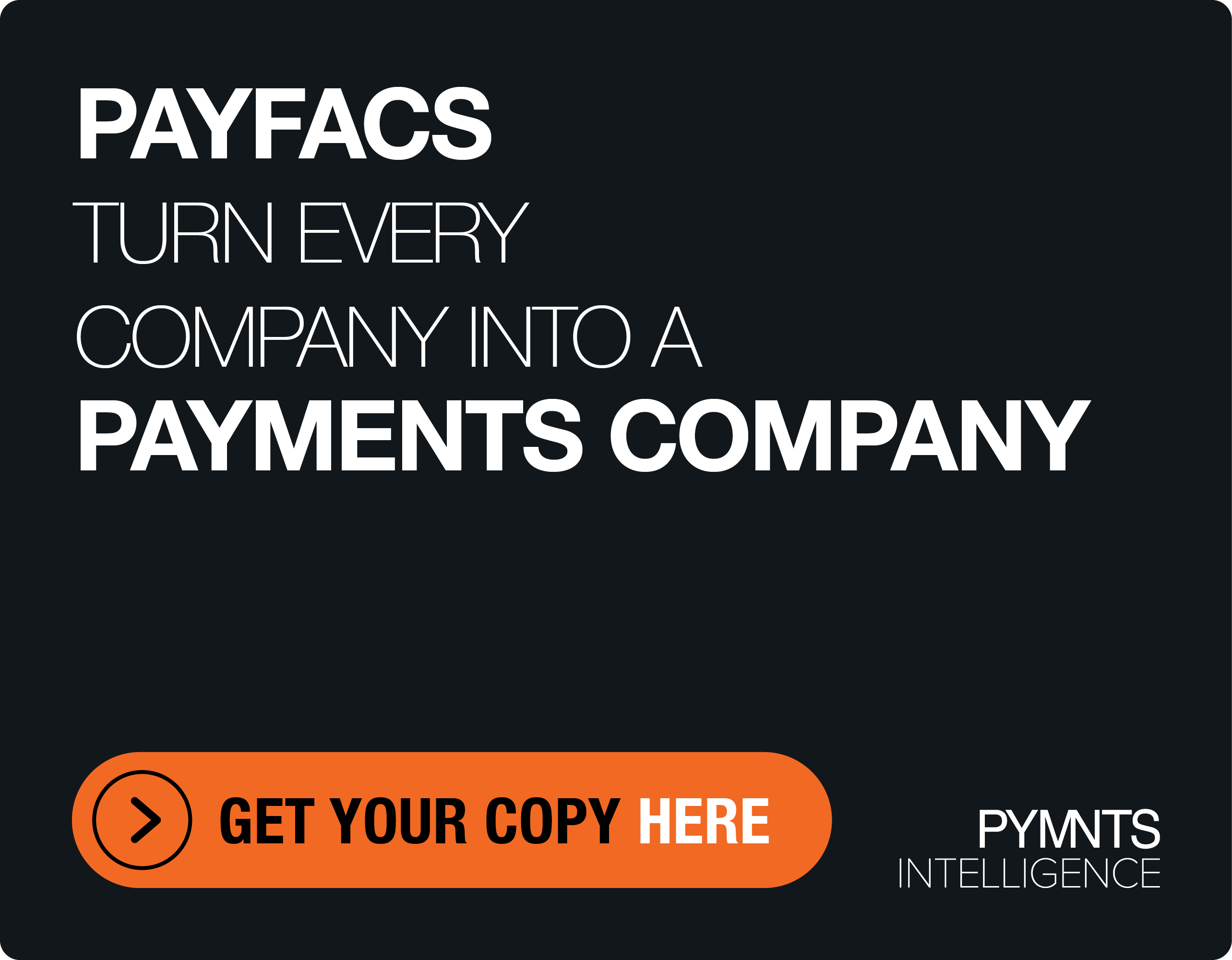Automating Ad Hoc Payments Makes Instant Pay a Reality for Gig Workers

Defined by their sporadic and one-off nature, ad hoc payments have traditionally provided a flexible solution for compensating individuals for their services, catering to the needs of both employers and workers.
According to a recent PYMNTS Intelligence study, produced in collaboration with Ingo Payments, these irregular payments, occurring outside of typical invoicing and payroll processes, now constitute a growing portion of enterprise senders’ volume. On average, they represent 30% of accounts payable (AP) volume in dollars, up from 24% in the final quarter of 2023.
Gig economy workers and small businesses, including freelance creatives and rideshare drivers, heavily rely on ad hoc payments. In fact, gig economy companies make an above-average share of ad hoc AP payments, the study found.
However, the traditional payment process can be cumbersome and slow, leaving workers frustrated by delayed transactions and administrative inefficiencies.
To address these challenges, a new trend is emerging: the automation of ad hoc payments. As the study revealed, firms across various industries are automating their ad hoc payment processes, including integrating intermediary instant payment solutions.
Notably, gig economy senders lead this trend, with 39% of their ad hoc payments sent instantly, and 62% employing automated processes for ad hoc payment systems, second only to gaming companies.
“Senders in gaming and the gig economy also top the list of industries that provide instant as a payment option, implying that these sectors have made ad hoc payments less of a nuisance by streamlining the payment process,” the study noted further.

This trend is further supported by additional research from PYMNTS Intelligence, indicating that instant payments represent nearly 40% of ad hoc payment transactions in the gig economy, surpassing the 27% average for senders across industries.
This data underscores the pivotal role ad hoc payments play in the operations of gig economy enterprises, “and partially explaining why this industry is most likely to use instant pay already,” the report stated.
Further validating this trend, separate PYMNTS Intelligence research reveals that the majority of gig workers and contractors, facing greater financial insecurity due to the part-time nature of their work, express a strong preference for faster payment methods over the conventional bimonthly pay period.
This means that providing instant payroll options has the potential to not only attract top talent but also enhance their productivity, ultimately benefiting businesses.
But despite strides in instant payment adoption, significant progress is still needed to gain widespread acceptance in the U.S., a critical step towards increasing the frequency of instant payments in ad hoc transactions.
“In terms of the [faster payment] capabilities we can offer, we’re at about a 7. In terms of the take-up, the use and the explosion of those payments, we’re at about a 1 or 2,” David Watson, CEO of The Clearing House told PYMNTS in an interview. “It’s a long journey to change an infrastructure and a settlement model.”
Nonetheless, Watson said that addressing unmet customer needs, such as earned wage access and ad hoc payments, will drive momentum and scale for instant payments in the future: “Instant payments settlement is the future, and it will be, de facto, the way to settle transactions cheaply, with certainty and with transparency.”

